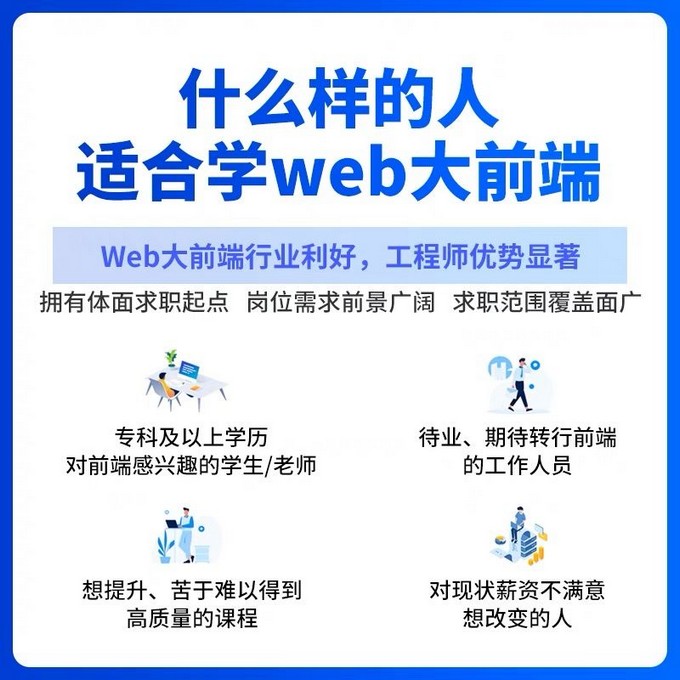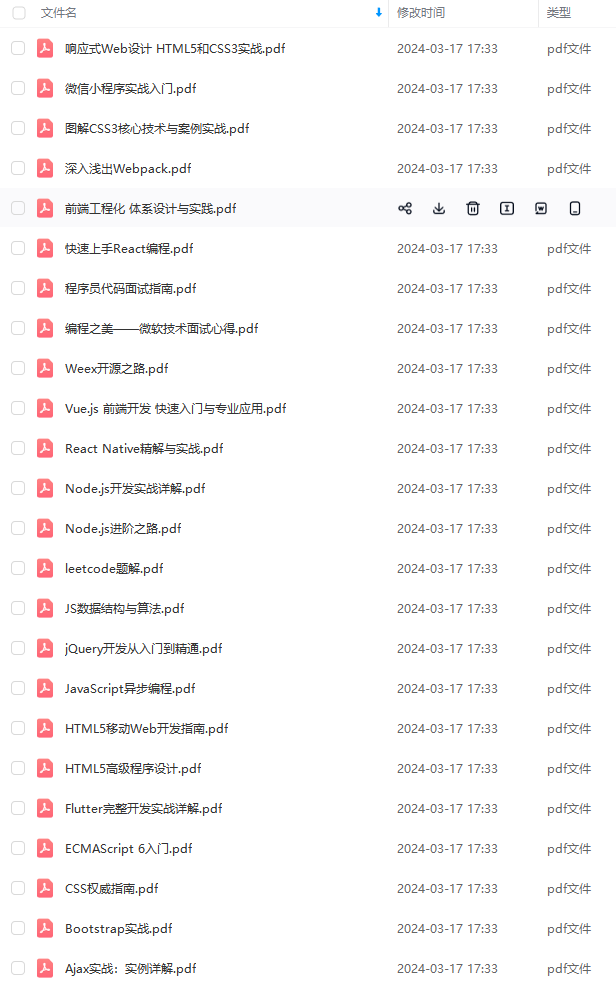- 1【SOC估计】扩展卡尔曼滤波EKF锂电池SOC估计【含Matlab源码 2769期】_ekf预测soc
- 2windows11 + NVIDIA-RTX3060显卡下运行Baichuan2大模型_windows11安装英伟达rtx3060
- 3Python词云实现_词云python代码
- 4【网站项目】家庭理财系统
- 5【Matlab股票价格预测】基于SVM支持向量机的股票价格时间序列预测(libsvm)(附MATLAB代码)_svm预测股价的matlab代码
- 6Xilinx FPGA 初探内部时钟管理_fpga bufgp
- 7Unity中射线与相交球的使用_unity 判断球是否与射线相交
- 8怎样读懂计算机论文算法,最新计算机算法分析论文参考文献 计算机算法分析专著类参考文献有哪些...
- 9如何实现图片上传至服务器_上传图片到服务器
- 10厉害了!打工人用Python分析西安市职位信息_西安单休合法化
webview最全面详解(一)了解官方文档
赞
踩
Then load the desired web page:
然后加载所需网页
// Simplest usage: note that an exception will NOT be thrown
// if there is an error loading this page (see below).
// 最简单的应用:注意在这种情况下,如果在加载的页面出现错
// 误,这个异常不会被抛出(如下)
webview.loadUrl(“https://example.com/”);
// OR, you can also load from an HTML string:
//而或,你也可以加载HTML字符串
String summary = “You scored 192 points.”;
webview.loadData(summary, “text/html”, null);
// … although note that there are restrictions on what this HTML can do.
// See loadData(String, String, String) and loadDataWithBaseURL(String, String, String, String, String) for more info.
// Also see loadData(String, String, String) for information on encoding special characters.
当然,要注意的是加载HTML是有限制的
请查阅loadData(String, String, String)和loadDataWithBaseURL(String, String, String, String, String)文档获取更多信息。
有关编码特殊字符的信息,另请参阅loadData(String,String,String)。
A WebView has several customization points where you can add your own behavior. These are:
Creating and setting a WebChromeClient subclass. This class is called when something that might impact a browser UI happens, for instance, progress updates and JavaScript alerts are sent here (see Debugging Tasks).
Creating and setting a WebViewClient subclass. It will be called when things happen that impact the rendering of the content, eg, errors or form submissions. You can also intercept URL loading here (via shouldOverrideUrlLoading()).
Modifying the WebSettings, such as enabling JavaScript with setJavaScriptEnabled().
Injecting Java objects into the WebView using the addJavascriptInterface(Object, String) method. This method allows you to inject Java objects into a page’s JavaScript context, so that they can be accessed by JavaScript in the page.
Here’s a more complicated example, showing error handling, settings, and progress notification:
webview有一些可以自定义的地方,你可以自定义自己的方法。这些分别是:
创建和设置一个WebChromeClient WebChromeClient 类。当某些可能影响浏览器用户界面的事件发生时会调用此类,例如,发送进度更新和JavaScript弹出alert的时候(请参阅调试任务)。
(译者注:WebChromeClient是辅助WebView处理Javascript的对话框,网站图标,网站title,加载进度等 )
创建和设置一个WebViewClient 类,当影响内容呈现的事情发生时,它会被调用,例如提交错误或表单。 你也可以在这里拦截URL加载(通过 shouldOverrideUrlLoading()]
(译者注:WebViewClient就是帮助WebView处理各种通知、请求事件的)
// Let’s display the progress in the activity title bar, like the
// browser app does.
//让我们像浏览器程序一样在activity标题栏展示加载进度
getWindow().requestFeature(Window.FEATURE_PROGRESS);
webview.getSettings().setJavaScriptEnabled(true);
final Activity activity = this;
webview.setWebChromeClient(new WebChromeClient() {
public void onProgressChanged(WebView view, int progress) {
// Activities and WebViews measure progress with different scales.
// The progress meter will automatically disappear when we reach 100%
//Activities 和WebViews以不同比例衡量进度。进度条会在我们达到100%时自动消失
activity.setProgress(progress * 1000);
}
});
webview.setWebViewClient(new WebViewClient() {
public void onReceivedError(WebView view, int errorCode, String description, String failingUrl) {
Toast.makeText(activity, "Oh no! " + description, Toast.LENGTH_SHORT).show();
}
});
webview.loadUrl(“https://developer.android.com/”);
Zoom
缩放
–
To enable the built-in zoom, set WebSettings.setBuiltInZoomControls(boolean) (introduced in API level CUPCAKE).
Note: Using zoom if either the height or width is set to WRAP_CONTENT may lead to undefined behavior and should be avoided.
要启用内置缩放,请设置 WebSettings.setBuiltInZoomControls(boolean) (在 CUPCAKE的API有介绍)。
注意:如果高度或宽度设置为WRAP_CONTENT,则使用缩放可能会导致未定义的行为,应该避免。
Cookie and window management
Cookie和窗口管理
For obvious security reasons, your application has its own cache, cookie store etc.—it does not share the Browser application’s data.
出于安全的考虑,你的应用有自己的缓存,cookie存储——它不与浏览器应用共享数据。
By default, requests by the HTML to open new windows are ignored. This is true whether they be opened by JavaScript or by the target attribute on a link. You can customize your WebChromeClient to provide your own behavior for opening multiple windows, and render them in whatever manner you want.
默认情况下,HTML发出的打开新窗口的请求会被忽略。 无论它们是由JavaScript打开还是由链接上的目标属性打开,都是如此。 您可以自定义您的WebChromeClient以规定你自己的行为以打开多个窗口,并以你想要的任何方式呈现它们。
The standard behavior for an Activity is to be destroyed and recreated when the device orientation or any other configuration changes. This will cause the WebView to reload the current page. If you don’t want that, you can set your Activity to handle the orientation and keyboardHidden changes, and then just leave the WebView alone. It’ll automatically re-orient itself as appropriate. Read Handling Runtime Changes for more information about how to handle configuration changes during runtime.
对于activity的标准行为来说,当设备方向或任何其他配置更改时,其都将被销毁并重建。这将导致webview去重载当前界面,如果你不希望如此,你可以设置你的Activity来处理orientation和keyboardHidden变化,不用理会WebView。 它会自动适当地重新定位自己。 阅读 Handling Runtime Changes 来获取有关如何处理运行时配置更改的更多信息。
‘
’
Building web pages to support different screen densities
构建网页适配不同屏幕密度
The screen density of a device is based on the screen resolution. A screen with low density has fewer available pixels per inch, where a screen with high density has more — sometimes significantly more — pixels per inch. The density of a screen is important because, other things being equal, a UI element (such as a button) whose height and width are defined in terms of screen pixels will appear larger on the lower density screen and smaller on the higher density screen. For simplicity, Android collapses all actual screen densities into three generalized densities: high, medium, and low.
一个设备的屏幕密度是基于屏幕分辨率。低密度的屏幕每英寸有较少的可用像素点,高密度的通常很明显的屏幕每英寸有较多的像素点。屏幕密度是很重要的,在其他的条件相同下,一个用屏幕像素定义和设置高度和宽度的UI元素(例如一个按钮),在低密度的屏幕显示较大,而在高密度的屏幕显示较小。为了简单,Android 将所有屏幕密度分为三个广义的密度:高,中,低。
By default, WebView scales a web page so that it is drawn at a size that matches the default appearance on a medium density screen. So, it applies 1.5x scaling on a high density screen (because its pixels are smaller) and 0.75x scaling on a low density screen (because its pixels are bigger). Starting with API level ECLAIR, WebView supports DOM, CSS, and meta tag features to help you (as a web developer) target screens with different screen densities.
默认情况下,WebView会缩放网页,以便在中等密度屏幕上以与默认外观相匹配的尺寸绘制网页。 因此,它在高密度屏幕上应用1.5倍缩放(因为其像素点较小),在低密度屏幕上缩放0.75倍(因为其像素点较大)。 从API为ECLAIR开始,WebView支持DOM,CSS和meta tag标签功能,以帮助你(Web开发人员)适配不同屏幕密度的屏幕。
Here’s a summary of the features you can use to handle different screen densities:
以下是可用于处理不同屏幕密度的功能摘要:
The window.devicePixelRatio DOM property. The value of this property specifies the default scaling factor used for the current device. For example, if the value of window.devicePixelRatio is “1.0”, then the device is considered a medium density (mdpi) device and default scaling is not applied to the web page; if the value is “1.5”, then the device is considered a high density device (hdpi) and the page content is scaled 1.5x; if the value is “0.75”, then the device is considered a low density device (ldpi) and the content is scaled 0.75x.
window.devicePixelRatio DOM属性。 此属性的值指定用于当前设备的默认比例因子。 例如,如果window.devicePixelRatio的值为“1.0”,则该设备被视为中等密度(mdpi)设备,并且默认缩放不会应用于网页; 如果该值是“1.5”,则该设备被认为是高密度设备(hdpi),并且页面内容被缩放为1.5倍; 如果该值为“0.75”,则该设备被认为是低密度设备(ldpi),并且该内容被缩放为0.75x。
The -webkit-device-pixel-ratio CSS media query. Use this to specify the screen densities for which this style sheet is to be used. The corresponding value should be either “0.75”, “1”, or “1.5”, to indicate that the styles are for devices with low density, medium density, or high density screens, respectively. For example:
The-webkit-device-pixel-ratio CSS查询。 使用此选项指定要使用此样式表的屏幕密度。 相应的值应该是“0.75”,“1”或“1.5”,以表明这些样式分别适用于低密度,中等密度或高密度屏幕的设备。 例如:
The hdpi.css stylesheet is only used for devices with a screen pixel ration of 1.5, which is the high density pixel ratio.
hdpi.css样式表仅用于屏幕像素比为1.5的设备,即高密度屏幕。
HTML5 Video support
HTML5 视频支持
In order to support inline HTML5 video in your application you need to have hardware acceleration turned on.
为了在你的应用程序中支持嵌入式HTML5视频,你需要打开硬件加速。
Full screen support
全屏支持
In order to support full screen — for video or other HTML content — you need to set a WebChromeClient and implement both onShowCustomView(View, WebChromeClient.CustomViewCallback) and onHideCustomView(). If the implementation of either of these two methods is missing then the web contents will not be allowed to enter full screen. Optionally you can implement getVideoLoadingProgressView() to customize the View displayed whilst a video is loading.
为了支持全屏 - 播放视频或展示其他的HTML内容 - 你需要设置WebChromeClient并实现onShowCustomView(View,WebChromeClient.CustomViewCallback)和onHideCustomView()。 如果缺少这两种方法中的任何一种,网页内容将不被允许进入全屏模式。 此外,你可以通过实现getVideoLoadingProgressView()方法,来自定义加载视频时显示的视图。
HTML5 Geolocation API support
HTML5 地理位置API 支持
For applications targeting Android N and later releases (API level > M) the geolocation api is only supported on secure origins such as https. For such applications requests to geolocation api on non-secure origins are automatically denied without invoking the corresponding onGeolocationPermissionsShowPrompt(String, GeolocationPermissions.Callback) method.
对于面向Android N及更高版本(API级别> M)的应用程序,地理位置api仅在安全来源(如https)的请求受支持。 对于此类应用程序,在不调用相应的onGeolocationPermissionsShowPrompt(String,GeolocationPermissions.Callback)方法的情况下,会自动拒绝在非安全来源上对地理位置api的请求。
Layout size
布局尺寸
It is recommended to set the WebView layout height to a fixed value or to MATCH_PARENT instead of using WRAP_CONTENT. When using MATCH_PARENT for the height none of the WebView’s parents should use a WRAP_CONTENT layout height since that could result in incorrect sizing of the views.
推荐设置webview的layout height设置为固定值或者设置为MATCH_PARENT而不是WRAP_CONTENT。当高度使用MATCH_PARENT时,WebView的父级都不应使用WRAP_CONTENT布局高度,因为这可能会导致视图大小不正确。
Setting the WebView’s height to WRAP_CONTENT enables the following behaviors:
设置webview的高度为WRAP_CONTENT 可能将会导致以下行为:
The HTML body layout height is set to a fixed value. This means that elements with a height relative to the HTML body may not be sized correctly.
For applications targeting KITKAT and earlier SDKs the HTML viewport meta tag will be ignored in order to preserve backwards compatibility.
HTML的body高度设置为固定值。 这意味着和HTML body高度有关的元素的尺寸可能不正确。
对于面向KITKAT和更早SDK的应用程序,为了保持向后兼容性,HTML视图元标签将被忽略。
Using a layout width of WRAP_CONTENT is not supported. If such a width is used the WebView will attempt to use the width of the parent instead.
不支持使用WRAP_CONTENT的布局宽度。 如果使用这样的宽度,WebView将尝试使用父宽度。
Metrics
数据收集
WebView may upload anonymous diagnostic data to Google when the user has consented. This data helps Google improve WebView. Data is collected on a per-app basis for each app which has instantiated a WebView. An individual app can opt out of this feature by putting the following tag in its manifest’s element:
当用户同意时,WebView可能会将匿名诊断数据上传到Google。 这些数据有助于Google改进WebView。 实例化WebView的每个应用程序,都会被收集数据。 每个应用程序都可以通过在清单的元素中加入以下标签来取消此功能:
…
<meta-data android:name=“android.webkit.WebView.MetricsOptOut”
android:value=“true” />
Data will only be uploaded for a given app if the user has consented AND the app has not opted out.
只有在用户同意并且应用程序未退出的情况下,数据才会上传。
自我介绍一下,小编13年上海交大毕业,曾经在小公司待过,也去过华为、OPPO等大厂,18年进入阿里一直到现在。
深知大多数前端工程师,想要提升技能,往往是自己摸索成长或者是报班学习,但对于培训机构动则几千的学费,着实压力不小。自己不成体系的自学效果低效又漫长,而且极易碰到天花板技术停滞不前!
因此收集整理了一份《2024年Web前端开发全套学习资料》,初衷也很简单,就是希望能够帮助到想自学提升又不知道该从何学起的朋友,同时减轻大家的负担。


既有适合小白学习的零基础资料,也有适合3年以上经验的小伙伴深入学习提升的进阶课程,基本涵盖了95%以上前端开发知识点,真正体系化!

由于文件比较大,这里只是将部分目录截图出来,每个节点里面都包含大厂面经、学习笔记、源码讲义、实战项目、讲解视频,并且会持续更新!
如果你觉得这些内容对你有帮助,可以扫码获取!!(资料价值较高,非无偿)

最后
一个好的心态和一个坚持的心很重要,很多冲着高薪的人想学习前端,但是能学到最后的没有几个,遇到困难就放弃了,这种人到处都是,就是因为有的东西难,所以他的回报才很大,我们评判一个前端开发者是什么水平,就是他解决问题的能力有多强。
分享一些简单的前端面试题以及学习路线给大家,狂戳这里即可获取!!!

由于文件比较大,这里只是将部分目录截图出来,每个节点里面都包含大厂面经、学习笔记、源码讲义、实战项目、讲解视频,并且会持续更新!
如果你觉得这些内容对你有帮助,可以扫码获取!!(资料价值较高,非无偿)

最后
一个好的心态和一个坚持的心很重要,很多冲着高薪的人想学习前端,但是能学到最后的没有几个,遇到困难就放弃了,这种人到处都是,就是因为有的东西难,所以他的回报才很大,我们评判一个前端开发者是什么水平,就是他解决问题的能力有多强。
分享一些简单的前端面试题以及学习路线给大家,狂戳这里即可获取!!!
[外链图片转存中…(img-d1OwBqHz-1711654444720)]



